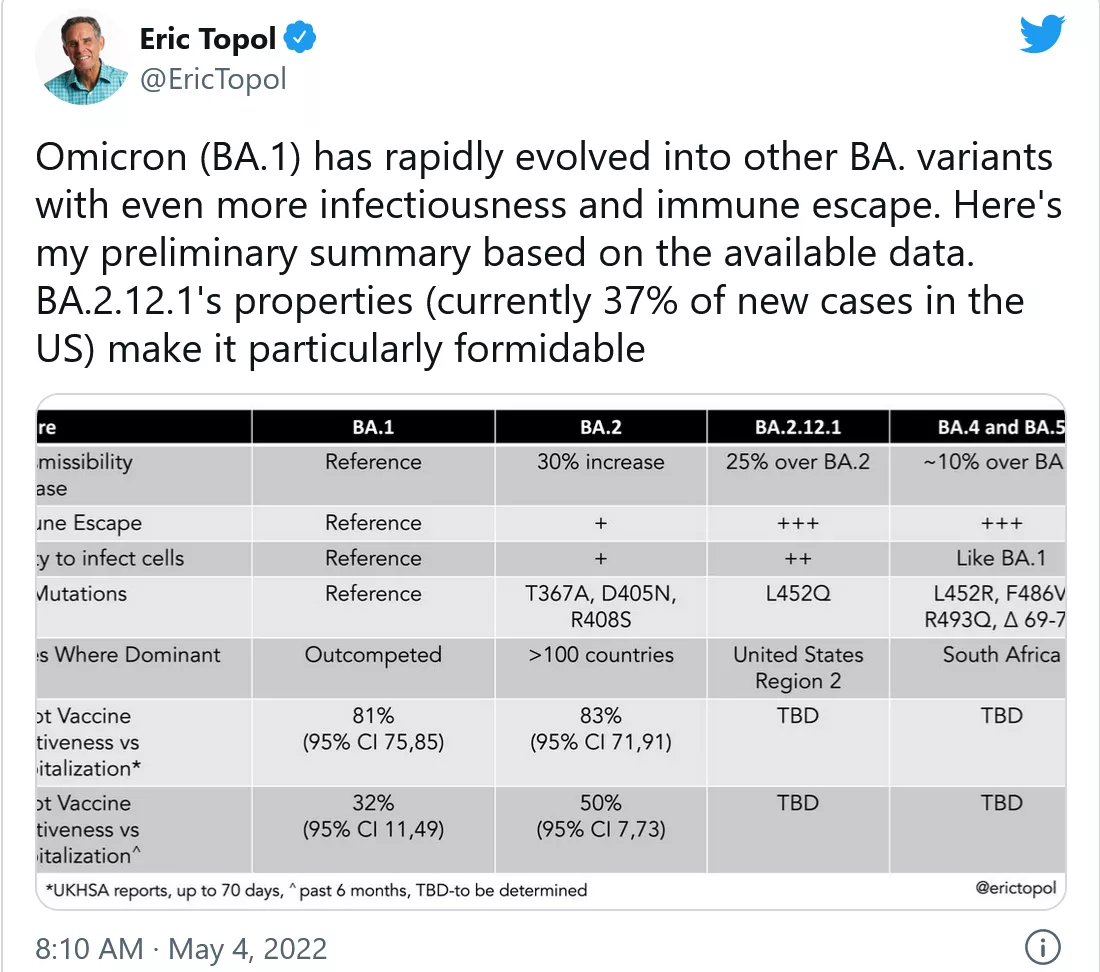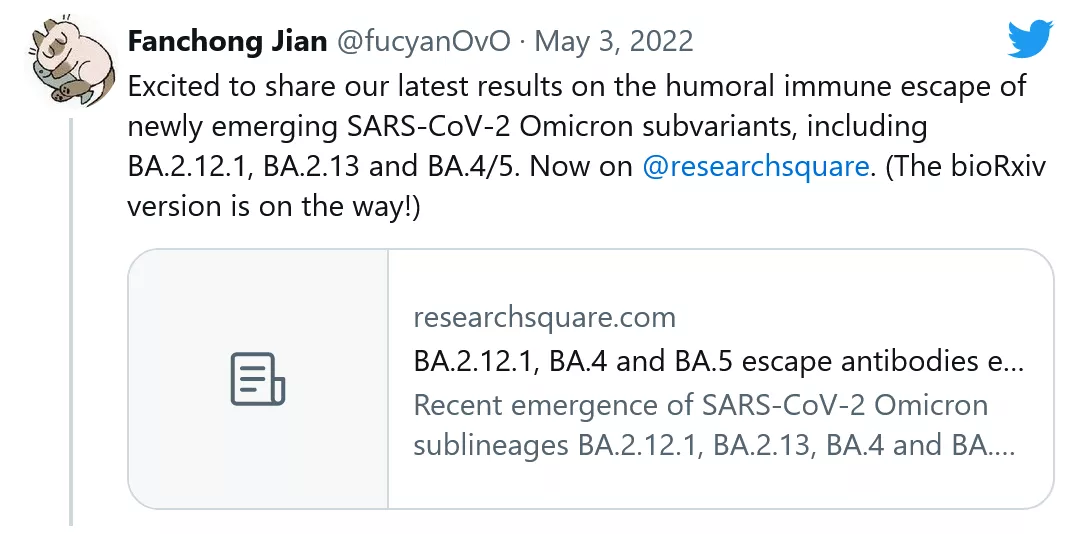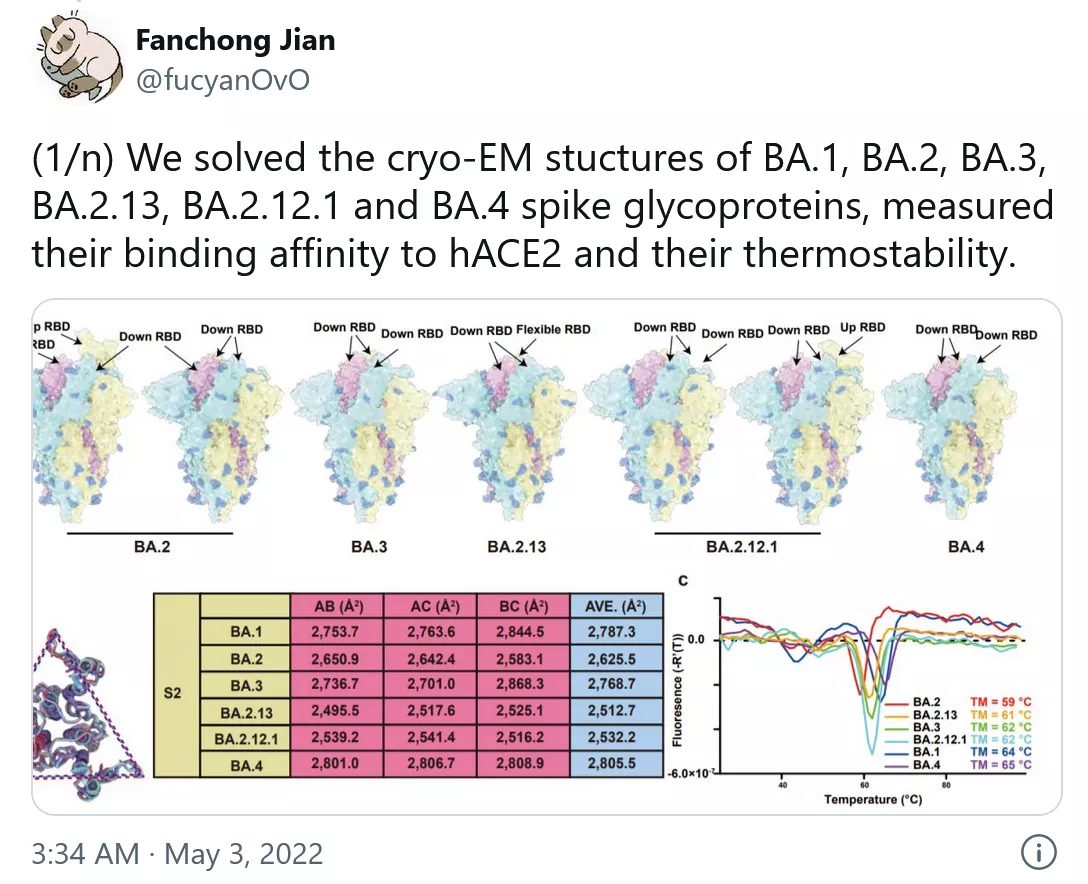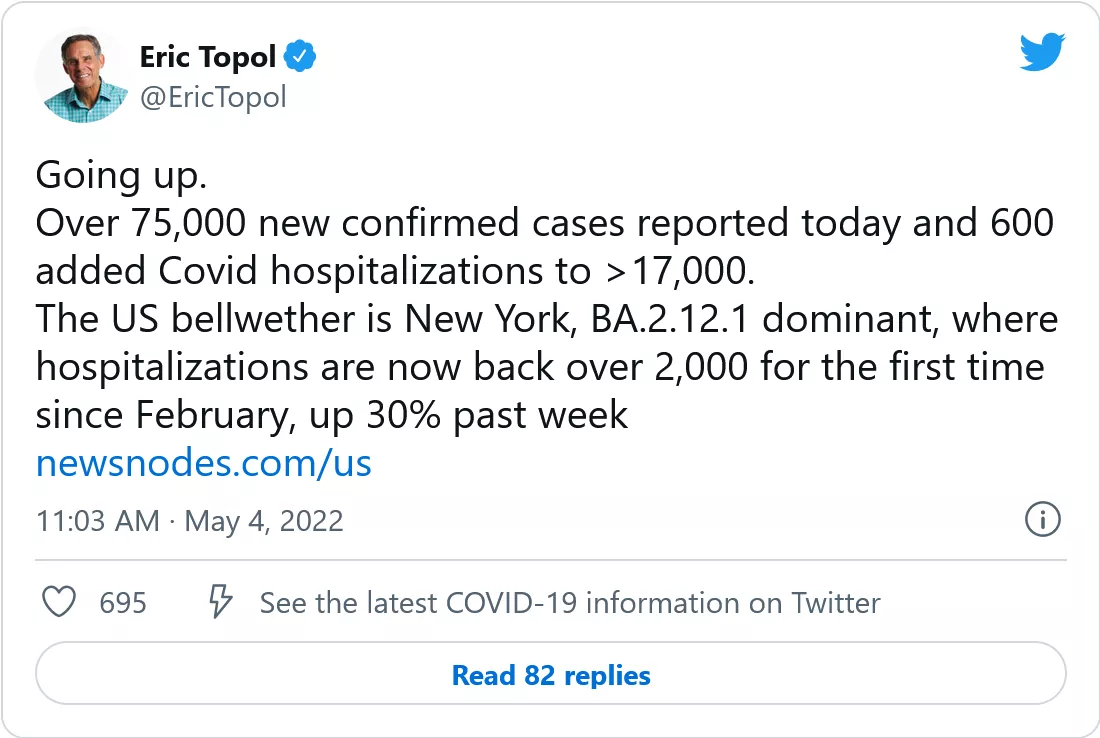Covid-19 variant tracking estimates from the Centers for Disease Control and Prevention (CDC) show that a new omicronya variant is rapidly prevalent in the United States This is called ba In addition to knowing that it may be the most infectious version of sars-cov-2 so far, little is known about the variant of 2.12.1. Experts warn that it may trigger a new wave of cases across the United States.
Since the emergence of the Omicron variant of sars-cov-2 at the end of 2021, the virus has spread and mutated at an incredible speed. Omicron's first iteration (b.1.1.529) took just a few weeks to become dominant in the United States, and then by the next sub variant ba 1.1 quickly pushed to a prominent position.
Wait until March, another named ba The Omicron iteration of 2 has occupied the United States. BA. 2 is not a new subtype of Omicron, but a different iteration of the same lineage in South Africa at the end of 2021.
BA. 2 was found to be about 30% higher than the previous diffusion to the whole Omicron iteration. But what's more problematic is that ba 2 has the ability to avoid monoclonal antibody treatment previously developed for the treatment of covid-19.
Now, another iteration of Omicron has been detected and is growing rapidly in the United States. This variant is called ba 2.12.1, it is a new mutation of unknown origin. Although it appeared on the variant tracker of CDC in the United States as early as early February, it only exploded across the United States in April.
US CDC's latest nowcast modeling estimate, as of the end of April, BA 2.12.1 accounting for 36.5% of new coronavirus infections in the United States. BA was found for the first time 2.12.1 in the northeast of the country, it is now considered to account for 80% of all infections.
BA. The emergence and growth of 2.12.1 reflect two other new Omicron subtypes reported in South Africa - BA 4 and ba 5。 Scientist Eric Topol's recent summary of the characteristics of these new variants shows that they are even better than ba 2 is more infectious, and some new mutations may enable them to reinfect people previously infected by early Omicron iterations. Topol pointed out that ba 4 and ba 5 may be more transmissible than ba 2 high 10%, however ba 2.12.1 may be more infectious, which has a 25% transmission advantage over the previously dominant Omicron variant.

A preprint study recently released by scientists from Beijing (not yet peer-reviewed) provides the first powerful observation of how antibodies previously infected with Omicron interact with BA 4、BA. 5 and ba 2.12.1 interaction. The results suggest that all three new Omicron subtypes may have the ability to escape from Ba Any characteristic of immunity produced in infection.
BA. 2.12.1 it was also found to contain some unique mutations, which could enhance its ability to enter human cells - basically increasing the suspicion that it may be the most infectious variant to date.


All these data are developing rapidly, and it is unclear what these new Omicron subtypes will do under real-world conditions. New York City, known as the weathervane of the United States, has recently seen an increase in covid-19 hospitalizations.
As of early May, the official record of covid-19 cases in New York State had reached the highest level since January. South Africa is talking to its own ba 4/BA. 5 peak, while also recording the highest covid-19 new case rate it has seen in months.
So far, there is no evidence that these new variants cause more serious diseases than the previous Omicron subtype. However, the number of hospitalizations in New York and South Africa is increasing, which shows that the high infection rate in the community always means that the virus has found the most vulnerable people.

Perhaps the biggest question now about these emerging Omicron subtypes is how to deal with specific variants of vaccine enhancers. Both Moderna and Pfizer are in the advanced stage of testing Omicron specific mRNA boosters. The two companies now hope to launch the injections later this year, before winter in the northern hemisphere. However, both new vaccines were designed to target the Ba of Omicron Subtype 1.
Analysis of these newly emerging Omicron subtypes of preprint studies showed that ba 4、BA. 5 and ba The immune escape characteristics of 2.12.1 may lead to a new round of reinfection. And maybe for BA The variant specific vaccine of 1 will not be the best choice to prevent these increasingly immune invasive Omicron strains.
"This poses a great challenge to the group immunity currently established through wt based vaccination and ba. 1 / BA. 2 infection," the new study pointed out. "Similarly, this observation also shows that the vaccine based on Omicron ba. 1 may not be an ideal antigen to induce broad-spectrum protection of emerging Omicron sub lines."
The FDA has scheduled a meeting in late June to lock in a new booster vaccine later this year. Moderna in its ba 1 mRNA booster is in a leading position in the test, and the company plans to deploy a new formula in August. However, the CEO of Moderna warned that if different omicronya variants need to be targeted, the date of August will be postponed to late 2022.